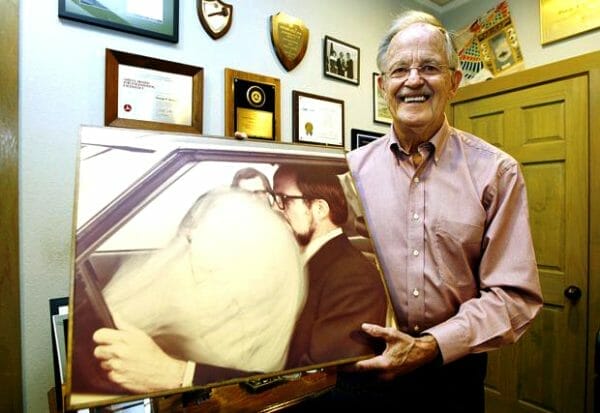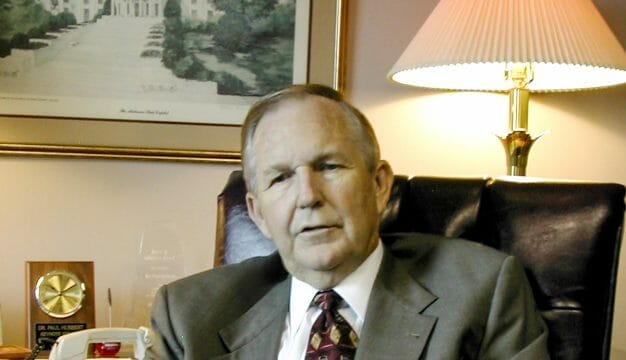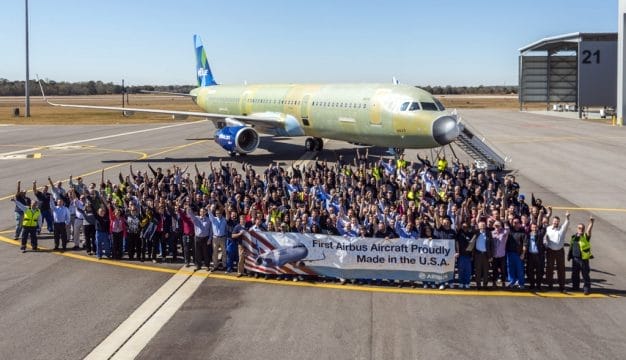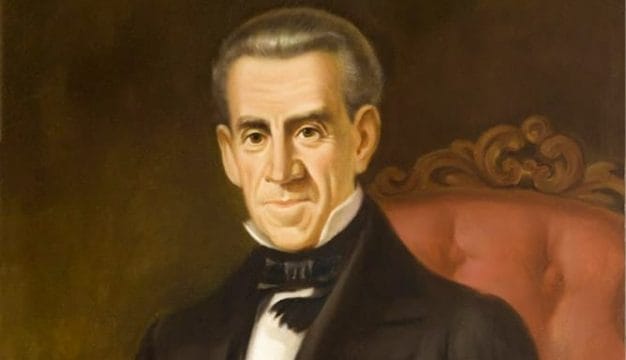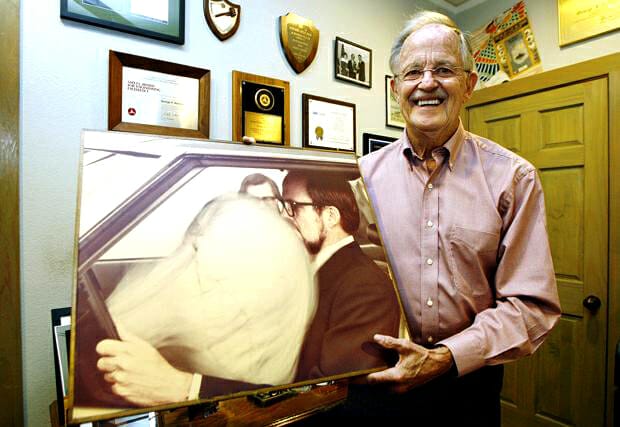George F. Kirchoff Jr.
George Frederick Kirchoff Jr. (1932-2020) was an engineer and inventor who helped develop automobile airbags. In his early career, the Birmingham, Jefferson County, native designed rockets and rocket engines for aerospace applications but later turned to airbag design, using his expertise in rocket propellants to develop a reliable high-speed inflation mechanism. Known within the industry as a “supplemental restraint system” (SRS), airbags are now ubiquitous in modern cars and have been credited with saving thousands of lives in automobile accidents since their introduction in the 1980s.
Kirchoff was born in Birmingham in 1932 to George F. Kirchoff, a food and dairy inspector, and Regina Marino Kirchoff. He developed an early interest in cars. He attended the former Phillips High School and went on to study engineering at Alabama Polytechnic Institute (API-present day Auburn University), graduating in 1955. He then enlisted in the U.S. Navy and attended flight school. While there, he met his future wife, Gene Golson of Prattville, Autauga County, and they wed in 1956. Together they had three children. Upon completing his military service, Kirchoff began working in the aerospace industry as a rocket designer. He worked extensively with solid rocket propellants and other combustibles, gaining experience in their design. In 1972, after being laid off from his job as a rocket engineer, Kirchoff reconsidered his career goals. His experience as a lay speaker in the Methodist Church led him to consider how he might use his talents to benefit others, rather than striving for individual achievement. Later, he would credit his faith as a guiding force behind his decision to begin working in auto safety technology.
Kirchoff moved his family to Utah and began working on airbag research with the Thiokol Corporation. Although airbags were not a new concept in the 1970s, they had yet to be successfully developed as a practical technology. Early airbag designs lacked a mechanism that could inflate the bag quickly enough to counteract the effects of a crash. They also lacked a reliable detection mechanism to indicate when to deploy. Kirchoff and his colleagues at the Thiokol Corporation focused on developing an airbag that would deploy quickly enough to act as an effective safety device. Kirchoff applied his knowledge of solid rocket propellants to develop a reliable, quick-acting inflation system that filled the airbag with gas from a fast-burning solid fuel pellet. This innovation inflated the airbag in less than 35 milliseconds, enough time to deploy and thereby counteract the force of most crashes. The introduction of reliable crash-detection systems developed by other inventors further aided their research. Kirchoff and his colleagues at Thiokol conducted hundreds of tests to achieve the exacting calibration necessary for the airbags to work. Kirchoff himself acted as the test subject on multiple occasions. He received numerous patents for components of the airbag system and because of his successful development work, several automakers began to offer airbags, on a limited basis, in their vehicles by the mid-1970s, including Ford Motor Company and General Motors.
The addition of these early models had little impact on car sales, but they demonstrated that car-based airbags were a viable technology. In 1981, Mercedes-Benz offered an airbag as optional equipment on its S-class sedan. Kirchoff himself purchased one of these sedans, which he later donated to the Browning-Kimball Classic Car Museum in Ogden, Utah. Throughout the 1980s, more and more automakers introduced airbags in their cars. Increasing federal safety standards and growing public concern for safety both helped promote the implementation of airbags. By 1998, front driver and passenger airbags became mandatory in all new vehicles sold in the United States. The National Highway Transportation Safety Administration estimates that airbags have saved thousands of lives since their introduction.
In 1992, Kirchoff received a safety award from consumer advocate Ralph Nader for his work on airbags. He retired from the industry in 1998 but continued to remain active in professional organizations. For ten years, he served as president of the Automotive Occupant Restraints Council (now known as the Automotive Safety Council), an industry trade group that represents automotive safety device manufacturers. In 2011, the automobile manufacturer BMW AG presented Kirchoff with a lifetime achievement award for his work on airbags and safety systems. Despite these accolades, Kirchoff maintained that the development of the airbag should be seen as a collective effort. After his retirement, Kirchoff lived in the Montrose Historic District just north of Fairhope, Baldwin County. Kirchoff died on July 29, 2020.
Further Reading
- Hoffman, Roy. “Pioneer of Airbags Reflects on Life-Saving Invention.” Al.com, December 11, 2011; http://blog.al.com/live/2011/12/post_154.html.
- Adams, Gary V., David P. Dahle, and George Kirchoff. 1987. Inflator and Remote Sensor with Through-Bulkhead Initiator. U.S. Patent 4699400 A, filed July 2, 1985, and issued October 13, 1987
